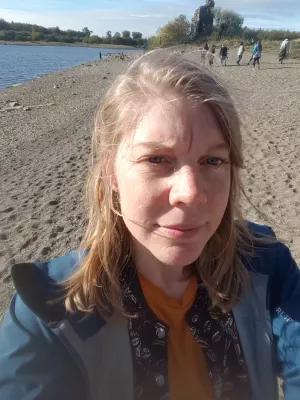
Veronica Hederström
Researcher

White clover pollinators and seed set in relation to local management and landscape context
Author
Summary, in English
Bees are declining, which is worrisome since they both have intrinsic conservation value and play a major role as pollinators in both natural and managed ecosystems. Land use change and lack of suitable habitats are often suggested as driving forces of bee decline. To propose mitigation measures to halt bee decline, it is important to understand how land use relates to bee abundance and diversity, and to explore consequences for their provision of pollination services. White clover, Trifolium repens, is an outcrossing mass-flowering crop, which could serve as an abundant, although ephemeral, food resource for bees. We investigated how the bee community in 39 fields of white clover grown for seed, related to local field management (organic, conventional without insecticides and conventional with insecticides) and landscape context (proportion semi-natural land), and how this pollinator community related to white clover seed set. The honey bee, Apis mellifera, was the most commonly observed bee species, and two generalist bumble bee species, Bombus terrestris and B. lapidarius, were the subsequently most common. We observed fewer non-Apis bees, and a lower bee species richness in organic white clover seed fields compared to conventional fields independent of insecticide treatment. Bee species richness in both conventional and organic fields were positively related to the proportion of semi-natural land in the landscape, likely because of a larger species pool in such landscapes. Initial seed set in immature inflorescences was positively related to bee abundance, whereas final seed set in mature inflorescences was unrelated to bee abundance, possibly as a consequence of seed-eating weevils consuming a large proportion of the seeds. We conclude that both bee visitation and seed set in white clover benefit from conventional management and that landscapes rich in semi-natural habitats will make future crop production more resilient. The observed positive relationship between bee abundance and initial seed set suggests that if we can mitigate pest impacts and increase bee abundance in clover seed fields, the final seed yield can be increased. Thus, bee decline should be considered and mitigated both to maintain biodiversity in general and for crop seed production specifically.
Department/s
- Biodiversity
- BECC: Biodiversity and Ecosystem services in a Changing Climate
- Biodiversity and Conservation Science
- LU Profile Area: Nature-based future solutions
- Sensory Biology
- Pheromone Group
Publishing year
2024-05
Language
English
Publication/Series
Agriculture, Ecosystems and Environment
Volume
365
Document type
Journal article
Publisher
Elsevier
Topic
- Ecology
- Environmental Sciences related to Agriculture and Land-use
Keywords
- Bee abundance
- Bee species richness
- Farming practice
- Landscape land use
- Seed set
- Trifolium repens
Status
Published
Research group
- Biodiversity and Conservation Science
- Pheromone Group
ISBN/ISSN/Other
- ISSN: 0167-8809